As far as satisfying gardening experiences go, I think I’ve got my top three favorites settled: biting into the first jalapeno of the season, watching my heuchera really wake up and shine in the early summer, and deadheading marigolds.
I can’t say there’s a more satisfying chore than deadheading these annuals. It’s quick, it’s easy, and it produces almost immediate results.
Even though it’s such a rewarding task, there are many folks who aren’t familiar with the practice at all, or who have never plucked a spent bloom from a marigold plant.
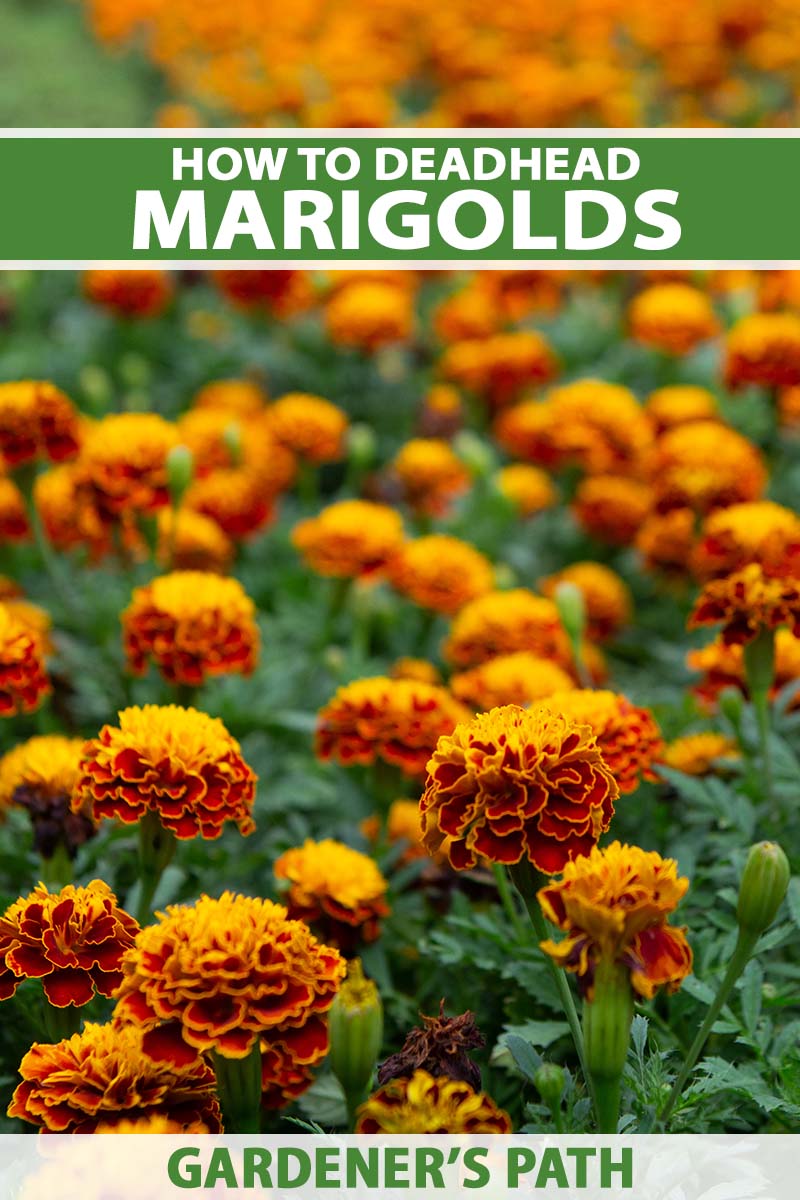
We link to vendors to help you find relevant products. If you buy from one of our links, we may earn a commission.
Without further ado, let’s get into how to take care of these carefree and glowing annuals.
Here’s what I’ll cover:
What You’ll Learn
Do I Really Need to Deadhead Marigolds?
In a few words, no, you don’t need to deadhead marigolds. Your plants will continue to grow without this bit of maintenance and they’ll still bloom, and they’ll keep on keepin’ on until the first frost.
But should you deadhead your plants? You’ve got two schools of thought on the matter to consider.
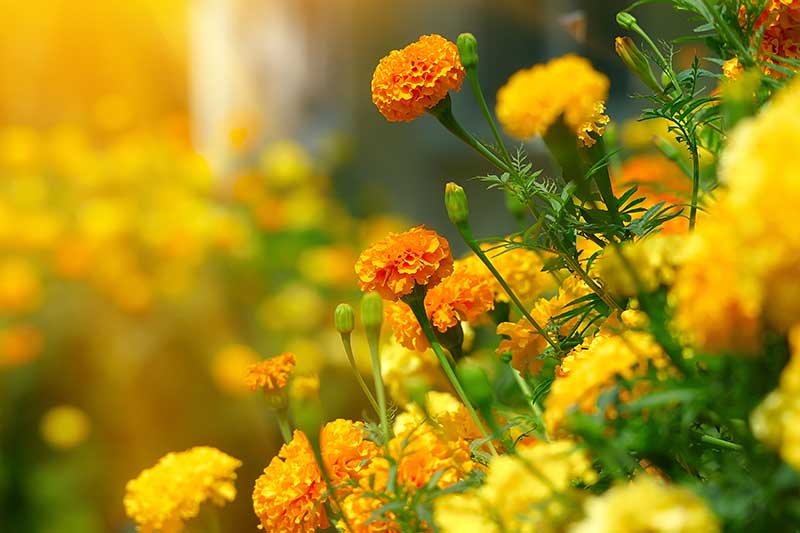
The first and overwhelmingly large majority will say that, yes, you absolutely should deadhead. This is because marigolds don’t respond very positively to fertilizers – they tend to get leggy and flop over – so it is the best and easiest way to ensure strong and consistent blooms.
By removing the fading and spent blooms, you encourage the plant to produce more buds that will shortly become those sunny flowers we know and love.
It also encourages a generally healthier plant because the flowers wither as they go to seed. This process is much more energy-intensive than producing a few more flowers.
Deadheading also serves as a sort of pruning and shaping for your marigolds and helps to develop stronger, bushier plants instead of stretched-out and wispy plants.
On the other hand, you don’t really need to deadhead marigolds. They’ll grow just fine without this fussy form of care, and you’ll get a few dozen (at least!) volunteer marigolds in your garden the next season from the flower heads that go to seed.
But in the interim, your plants might look more leggy than you’d like, or they won’t have the same volume of blooms as they would if you were deadheading.
What would I do?
I’d deadhead until it got really, really hot outside, and then I’d say to myself, “Nah, they’ll be okay until it cools down.” And every day while walking to my car I’d look at those crispy and burnt-up buds and think that I really should deadhead them.
But I won’t! Not until it cools down.

In the fall, I’d pluck those flower heads and save the seeds from the really dry and crispy ones, and I’d get to enjoy a few more weeks of summer flowers before the frost takes them away from me.
So, that kind of went in two directions without a solid answer, didn’t it? Don’t worry, here’s a quick recap so you can make the call for yourself:
Deadheading your marigolds regularly will ensure you have tight, bushy plants that look excellent year round.
You will have a tidier garden the following year because none of your marigolds went to seed, and you’ll have nonstop blooms throughout the season for the cost of a few minutes a day of garden maintenance.
Not deadheading regularly results in wispier plants that might not look as stunning as they could, but they still have pretty flowers and look perfect in a less formal and more natural garden.
You’ll be rewarded with random marigold volunteers the next season, but it can become difficult to control the volume of plants that are happy to eat up whatever empty space you’ve got.
Both options are perfectly fine; hey, it’s your garden, you do you!
However, if you are in the “I don’t wanna deadhead” club, I suggest you keep reading so you can learn to harvest some free flower seeds by snipping the spent blooms.
How Often Should I Deadhead?
You can safely deadhead whenever the heck you feel like it. Any time of the day is acceptable, and any day of the season is good as another.
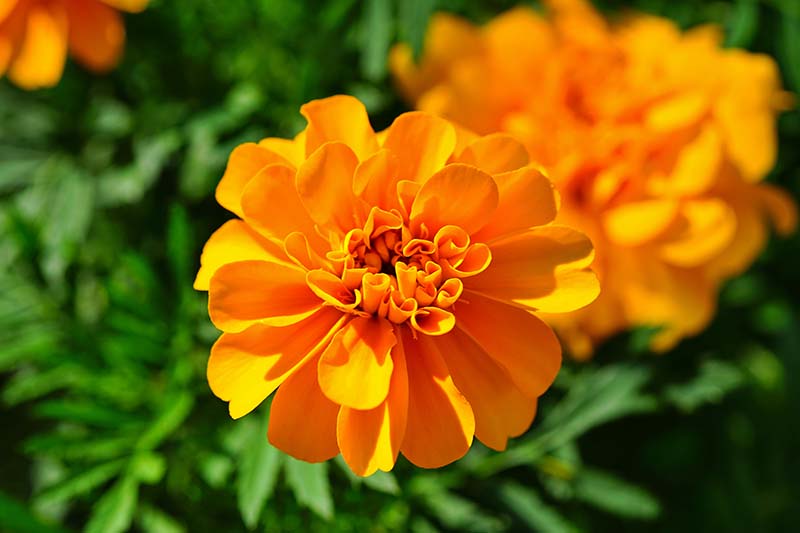
I recommend taking care of this little chore when you’ve got a few minutes to lose yourself in the act. My personal favorite time is in the morning, with a cup of coffee in one hand and a collection of marigold buds in the other.
You could take care of the plants daily if you like, or every couple of days. I’d suggest taking care of this task every few days rather than attending to it daily.
This enables your flowers to bloom and do their thing, and it gives the pollinators a chance to take advantage of the free meal.
How to Deadhead Marigolds
This is super complicated. Ready? Grab a spent bloom between your index finger and your thumb, then plop it off. What a satisfying sound it makes.
There you go, you just deadheaded a marigold.
Okay, there’s a little more to it than that. But not much!
The first consideration to make is, which flowers am I removing?
You’ll find a couple of different possible answers here, but my professional suggestion is to only remove flowers that are beginning to wilt but to also get them before the flowers get crispy (or soggy, if it’s been rainy).

Removing flowers too early defeats the purpose since you’re removing flowers that are perfectly fine. Wait too long and you’re risking a few dozen seeds per bloom invading your garden space.
The best method for removing the spent flowers is the most satisfying. Pinch the bud between thumb and finger and snap it off, right above the closest set of leaves below the flower. Plop.
Seriously, that’s the sound it makes. If you’ve got a better sound to describe it, let me know in the comments below.
However, if you like to throw on some gloves and grab your pruners, you’re in luck. I’d recommend fine scissor-style pruners (or just plain scissors) to remove the buds. Pretend you’re a surgeon or are defusing a bomb, and carefully snip the stem below the fading flower and right above the next set of leaves.
You can compost the buds if you like. My preferred method is to just toss them into the garden after I remove them. They’ll break down!
Wait, You Said Something About Collecting Seeds!
That’s right, attentive reader!
If you want to collect seeds from your marigolds, wait until the flower heads have become crispy and dry. It takes a couple of days after they start fading to find that sweet spot.

My tried-and-true method for testing the flowers is to gently squish the flower head between my fingers. If it crinkles and then springs back to its normal shape, the seeds are perfect for plucking.
Keep an envelope handy. Remove the flower heads exactly as described above. With the crispy flowers in hand, freely pull the finished flower petals loose and drop them into the envelope.
Every single flower one of these petals will be attached to a marigold seed! Some people will recommend removing the spent flower petal from the seed itself, but I think this is overkill.
Store the seeds somewhere dry and cool over the winter, and plant them outside after the last frost in spring.
I’ve tried growing them in seed trays with mixed success, though I have consistently been happy with the results of “free seeding” in my garden.
Read more about saving marigold seeds in our guide.
Achievement Unlocked: Expert Deadheader
And there it is, you’re now an expert at deadheading marigolds. Funny how the crash course is also the PhD level course, huh?
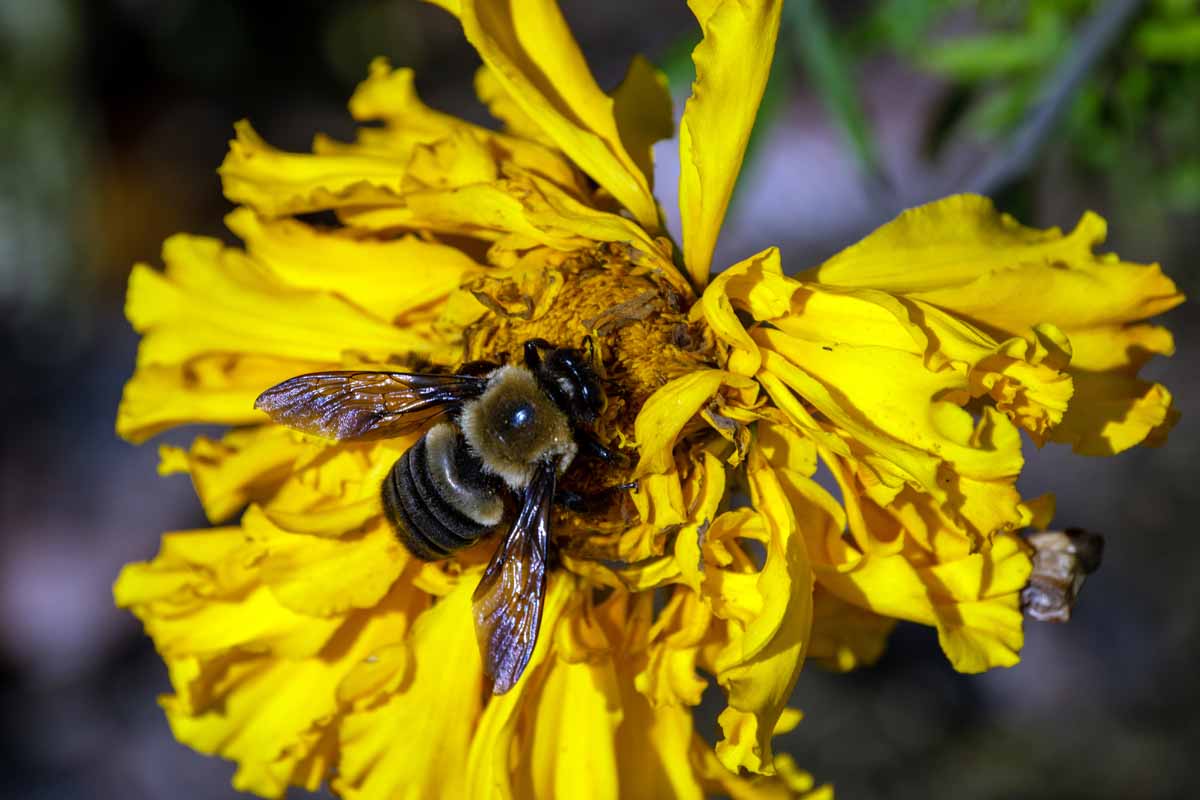
Do you have any tips, suggestions, or questions on how to deadhead this beloved summer annual? Do you have a better descriptor for the sound of removing them than plop? Leave us a comment below!
Were you into this guide? If you’re ready to learn more about growing these cheerful plants, read our other marigold guides next:
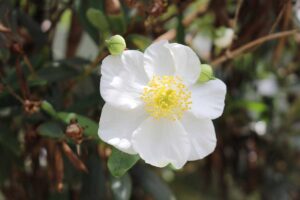


Very will written and very informative to boot! Thank you!
Something is eating my leaves off my marigolds. What can I do? They’re in big pots. Thank you.
Hi Bonnie, please could you share a picture so we can take a look? Thanks! Slugs may be the culprit, but other pests will eat them as well.
I think the sound is between pop and snap. Plop works though I wonder if perhaps my east Dallas blooms are dry compared to wherever you are.
Haha MayaD, I agree on the pop-snap soundtrack while you deadhead marigolds. There’s a chance your blooms are drier since Matt is in Pennsylvania and admitted he only deadheads up until the weather gets too hot. But the pods are probably equally crispy mid-summer. Thanks for sharing your take.